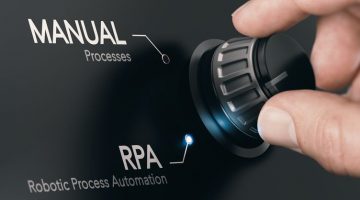Process mining combines data science with process improvement methodology to create new methods for process-centric analytics. It’s used to support process improvement initiatives in better defining the “as-is” state of an operation.
That’s important because such analysis helps companies identify waste, errors, bottlenecks and challenges. Using data to better identify these issues can strengthen the application of process improvement methodologies such as Lean Six Sigma.
Essentially, it’s where data science and process improvement methodologies meet.
Bridging the Gap
Process mining leverages the advances made in data science to support better business process improvement. Currently, data mining has no direct relationship with business processes. One focuses on collecting and analyzing operational data. The other focuses on controlling and improving ongoing business processes.
Process mining bridges the gap between the two. Methodologies such as Lean Six Sigma are improved by collecting and analyzing data from the information technology systems that support processes.
That data gives process improvement teams an accurate, end-to-end view of how a process operates.
Growth in Europe
Process mining currently enjoys more use in Europe than in the United States, according to an article in the Harvard Business Review titled, “What Process Mining Is and Why Companies Should Do It.” One process mining leader identified in the article is Celonis, based in Munich, Germany. This is largely due to the fact that Wil van der Aalst is the company’s chief scientific officer.
On his personal webpage at RWTH Aachen University, where he is a professor, Aalst lays out the case for process mining. He calls data science “the profession of the future, because organizations that are unable to use data in a smart way will not survive.”
However, he writes that data is not enough. People must apply data to process improvement. He writes that process mining “bridges the gap” between these two areas:
- Traditional model-based process analysis, such as simulation and other business process management techniques
- Data-centric analysis techniques, such as machine learning and data mining.
Aalst, considered a subject matter expert, writes that process mining “seeks the confrontation between event data (i.e., observed behavior) and process models (hand-made or discovered automatically).”
Areas Where Process Mining Can Be Used
Celonis also is supportive of Lean Six Sigma. A writer on the company’s blog, Simone Hoffmann, notes that Lean Six Sigma is a “tried-and-true tool” that helps companies determine which processes enhance value and are necessary.
“In a climate of growing competitive pressure, inefficiencies are hardly forgivable,” Hoffman writes.
Process mining is a better way of solving those inefficiencies. Aalst writes that it can apply to any type of operation. He lists:
- Analyzing treatment processes in hospitals
- Improving customer service processes in a multinational
- Understanding the browsing behavior of customers using a booking site
- Analyzing failures of a baggage handling system
- Improving the user interface of an X-ray machine
Replacing Manual Effort with Data
Process mining uses software in place of the manual mapping done with most business process improvement methodologies. Those who use it focus on verifying, using the most exact information possible, the efficiency of every operation within a process.
This helps produce more accurate results. As with anything employing data rather than human-led evaluation, process mining eliminates subjectivity, human error and wasted time. That last one is especially important for many companies. Manual mapping of processes can take time and include interviews with the people involved and subjective views by those doing the research.
While the human element is never eliminated, process mining relies more on sheer data, which paints a more accurate picture.
Example of Process Mining and DMAIC
An example of using process mining with one of the major tools of Six Sigma, DMAIC, is provided by a “process miner” writing for LinkedIn. DMAIC stands for Define, Measure, Analyze, Improve and Control.
The article provides examples of how process mining can help in each phase. For example, in the Define phase, the article notes that process mining “gives you instant fact-based insight into how the different process activities are related and lots of statistics about the frequencies and duration of the process steps.”
It also quickly identifies the areas of bottlenecks in a process.
Later, in the Analyze phase, software can look at processes from many different views, such as “customer view” and “department view,” according to the writer.
Process mining is about taking the latest in data science and analysis and combining it with proven process improvement methodology. The combination may help make improvements happen faster and stand a better chance of being sustained.



